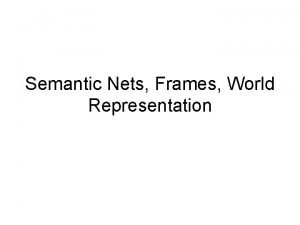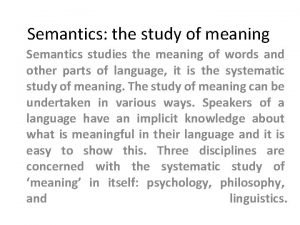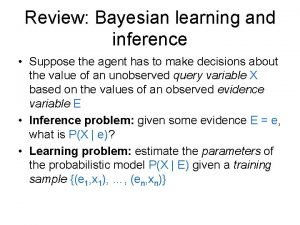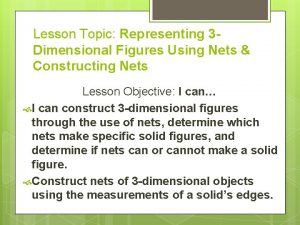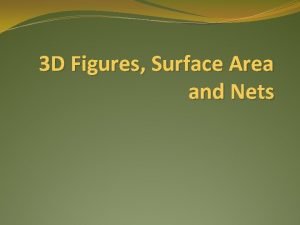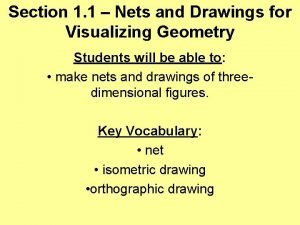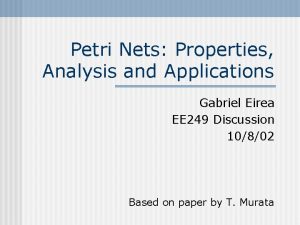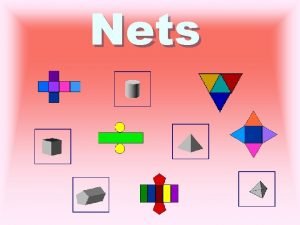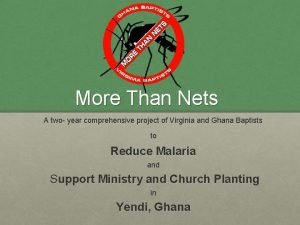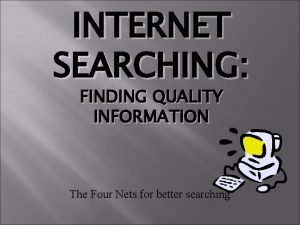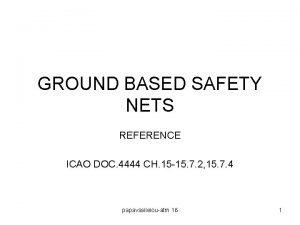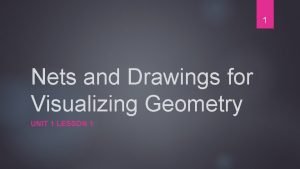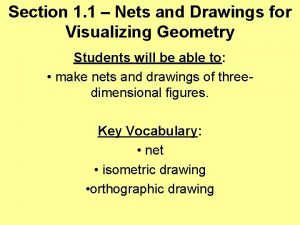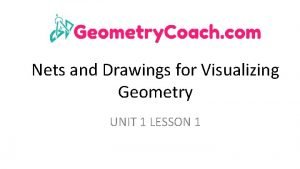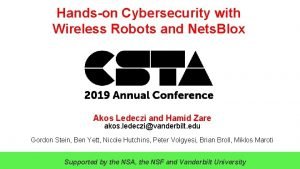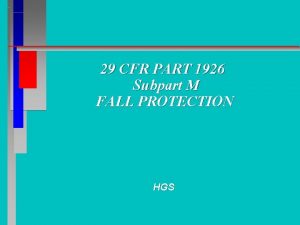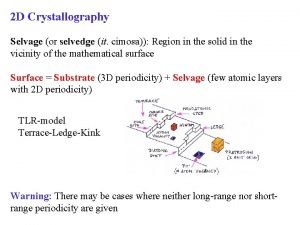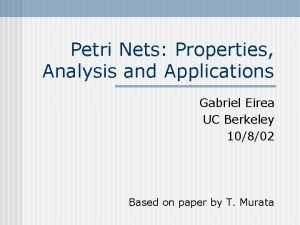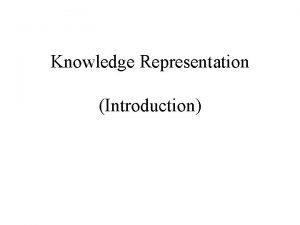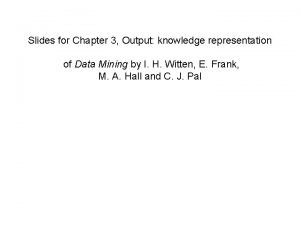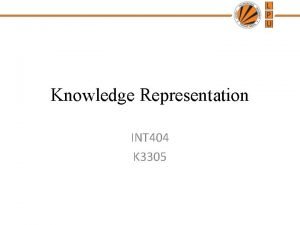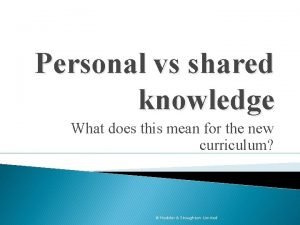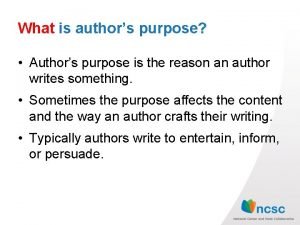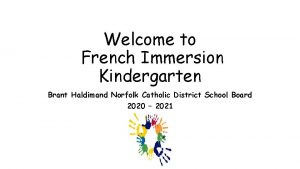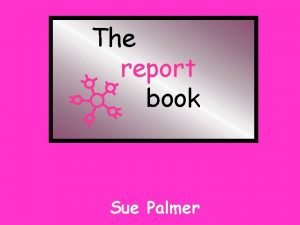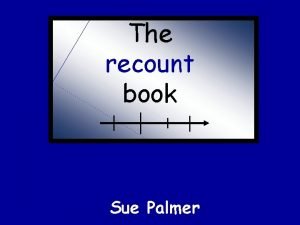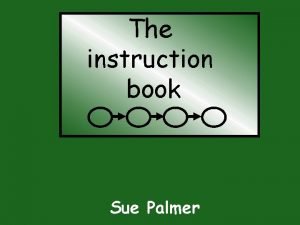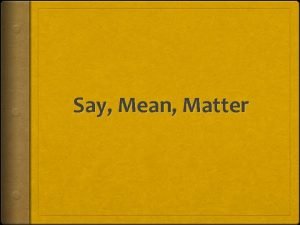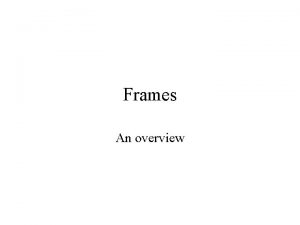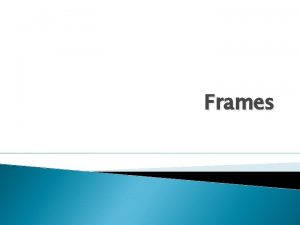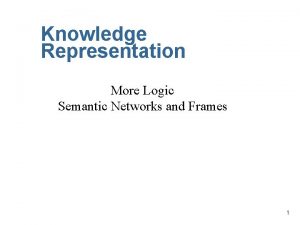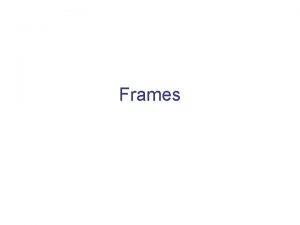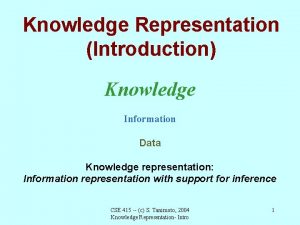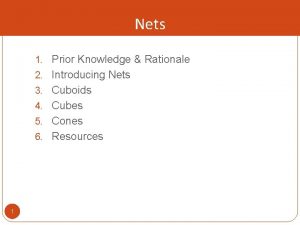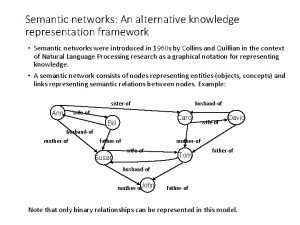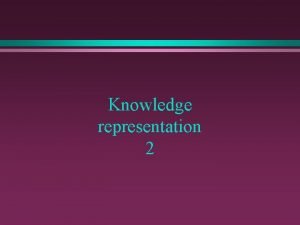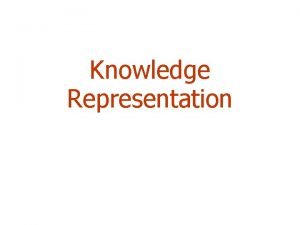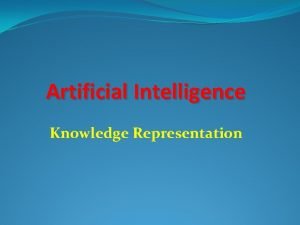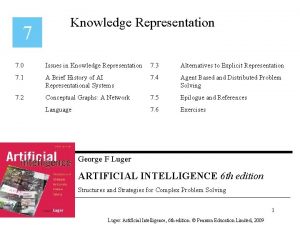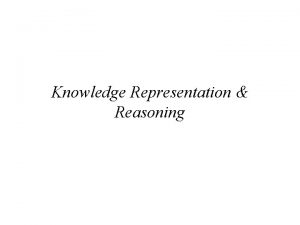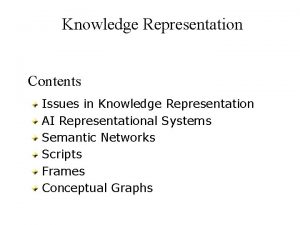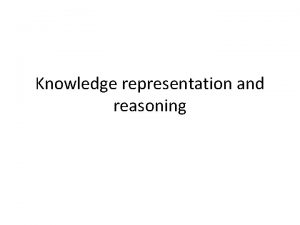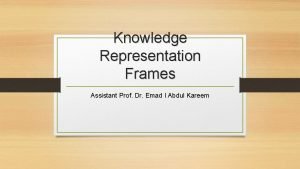Semantic Nets Frames World Representation Knowledge Representation as









































- Slides: 41

Semantic Nets, Frames, World Representation

Knowledge Representation as a medium for human expression • An intelligent system must have KRs that can be interpreted by humans. – We need to be able to encode information in the knowledge base without significant effort. – We need to be able to understand what the system knows and how it draws its conclusions.

Knowledge Representation • Logic (prepositional, predicate) • Network representation – Semantic nets • Structured representation – Frames • Issues in KR – Hierarchies, inheritance, exceptions • Advantages and disadvantages

Semantic Networks • First introduced by Quillian back in the late-60 s M. Ross Quillian. "Semantic Memories", In M. M. Minsky, editor, Semantic Information Processing, pages 216 -270. Cambridge, MA: MIT Press, 1968 • Semantic network is simple representation scheme which uses a graph of labeled nodes and labeled directed arcs to encode knowledge – Nodes – objects, concepts, events – Arcs – relationships between nodes • Graphical depiction associated with semantic networks is a big reason for their popularity

Nodes and Arcs • Arcs define binary relations which hold between objects denoted by the nodes. mother Sue John age wi hu fe age sb 34 father an d Max 5 mother (john, sue) age (john, 5) wife (sue, max) age (max, 34) …

Non-binary relations • We can represent the generic give event as a relation involving three things: – A giver – A recipient – An object Mary recipient GIVE giver object book John

Inheritance • Inheritance is one of the main kind of reasoning done in semantic nets • The ISA (is a) relation is often used to link a class and its superclass. • Some links (e. g. haspart) are inherited along ISA paths • The semantics of a semantic net can be relatively informal or very formal – Often defined at the implementation level Animal isa Bird has. Part isa Robin isa Rusty isa Red Wings

Multiple Inheritance • A node can have any number of superclasses that contain it, enabling a node to inherit properties from multiple parent nodes and their ancestors in the network. It can cause conflicting inheritance. Nixon Diamond (two contradictory inferences from the same data) subclass Person pacifist non-pacifist Quaker instance Republican instance Nixon P ? !P subclass Q R N

Example

Advantages of Semantic nets • Easy to visualize • Formal definitions of semantic networks have been developed. • Related knowledge is easily clustered. • Efficient in space requirements – Objects represented only once – Relationships handled by pointers

Disadvantages of Semantic nets • Inheritance (particularly from multiple sources and when exceptions in inheritance are wanted) can cause problems. • Facts placed inappropriately cause problems. • No standards about node and arc values

Conceptual Graphs • Conceptual graphs are semantic nets representing the meaning of (simple) sentences in natural language • Two types of nodes: – Concept nodes; there are two types of concepts, individual concepts and generic concepts – Relation nodes(binary relations between concepts) GO NEW YORK JOHN Who How BUS Where

Frames • Frames – semantic net with properties • A frame represents an entity as a set of slots (attributes) and associated values • A frame can represent a specific entry, or a general concept • Frames are implicitly associated with one another because the value of a slot can be another frame 3 components of a frame • frame name • attributes (slots) • values (fillers: list of values, range, string, etc. ) Book Frame Slot Filler • Title AI. A modern Approach • Author Russell & Norvig • Year 2003

Features of Frame Representation • More natural support of values then semantic nets (each slots has constraints describing legal values that a slot can take) • Can be easily implemented using object-oriented programming techniques • Inheritance is easily controlled

Inheritance • Similar to Object-Oriented programming paradigm Hotel Chair Hotel Room • what room • where hotel • contains –hotel chair –hotel phone –hotel bed • what chair • height 20 -40 cm • legs 4 Hotel Phone • what phone • billing guest Hotel Bed • what • size • part bed king mattress Mattress • price 100$

Modern Data-Bases combine three approaches: conceptual graphs, frames, predicate logic (relational algebra)

Benefits of Frames • Makes programming easier by grouping related knowledge • Easily understood by non-developers • Expressive power • Easy to set up slots for new properties and relations • Easy to include default information and detect missing values

Drawbacks of Frames • No standards (slot-filler values) • More of a general methodology than a specific representation: – Frame for a class-room will be different for a professor and for a maintenance worker • No associated reasoning/inference mechanisms

Description Logic • There is a family of frame-like KR systems with a formal semantics – KL-ONE, Classic • A subset of FOL designed to focus on categories and their definitions in terms of existing relations. Automatic classification – Finding the right place in a hierarchy of objects for a new description • More expressive than frames and semantic networks • Major inference tasks: – Subsumption Is category C 1 a subset of C 2? – Classification Does Object O belong to C?

KL-ONE (Brachman, 1977) • Bi-partite view of knowledge representation 1. Descriptions 2. Assertions • Entities can be “described” without making any particular assertions about them • Descriptions are made from other descriptions using a very small set of operators







CYC • A knowledge engineering effort • Encoding of large amounts of knowledge about the everyday world • 1984 -present • A person century of effort • 106 general concepts and axioms

Example Assertions • You have to be awake to eat. • You can usually see people’s noses but not their hearts. • Given two professions, either one is a specialization of the other or they are likely to be independent. • You cannot remember events that have not happened yet. • If you cut a lump of peanut butter in half, each half is also a lump of peanut butter; but if you cut a table in half, neither half is a table.

Contexts • Heart surgery • Total darkness • Fiction • Ephemeral: indexicals • Default context

Why we can’t use natural language • The police arrested the demonstrators because they feared violence. • The police arrested the demonstrators because they advocated violence. • The box is in the pen. • The pen is in the box. • Mary poured the water into the tea kettle; when it whistled, she poured the water into her cup (for translation to Japanese)

Representing Terms • 1000 different occupations • Assertion that each occupation is independent • A surgeon is a doctor • Masons are builder • NOT surgeons are rarely masons • Atomic concepts • Somewhere between promiscuity and perspicacity

Ontology • CYC and others: shareable ontologies • Available for many different applications to use • Semantic web • An ontology describes the set of representational terms • Provides definitions • Carves up the world


Connected:

Two Case Studies • Physical quantities, units of measure, and algebra for engineering models • An ontology for sharing bibliographic data

Bibliographic Data • What concepts do we need to know about?



Rational • Why are documents distinct from references? • Why distinguish publishers and authors? • Why represent time points? • => integrity constraints • => independence from the data


OVERFLOW • Semantic nets: originally developed for mapping sentences (NLP). Example with Shank’s graphs.
 Semantic nets and frames
Semantic nets and frames Partitioned semantic nets in artificial intelligence
Partitioned semantic nets in artificial intelligence Semantic nets
Semantic nets Prototype in semantics
Prototype in semantics The study of the meaning of words
The study of the meaning of words Bayes nets
Bayes nets Represent solid figures using nets
Represent solid figures using nets Surface area using nets
Surface area using nets 1-1 practice nets and drawings for visualizing geometry
1-1 practice nets and drawings for visualizing geometry Petri nets properties analysis and applications
Petri nets properties analysis and applications Net triangular prism
Net triangular prism Nets church planting
Nets church planting List the 4 nets for better internet searching
List the 4 nets for better internet searching 7 safety nets
7 safety nets Nets and drawings for visualizing geometry
Nets and drawings for visualizing geometry Nets and drawings for visualizing geometry
Nets and drawings for visualizing geometry Nets and drawing for visualizing geometry
Nets and drawing for visualizing geometry Nets blox
Nets blox 29 cfr 1926 subpart m
29 cfr 1926 subpart m Bravais nets
Bravais nets Apple sweatshop
Apple sweatshop For better convenience
For better convenience Petri nets properties analysis and applications
Petri nets properties analysis and applications Script knowledge representation
Script knowledge representation Output knowledge
Output knowledge Int 404
Int 404 Personal and shared knowledge
Personal and shared knowledge Knowledge shared is knowledge squared
Knowledge shared is knowledge squared Knowledge shared is knowledge multiplied
Knowledge shared is knowledge multiplied Knowledge creation and knowledge architecture
Knowledge creation and knowledge architecture Contoh shallow knowledge dan deep knowledge
Contoh shallow knowledge dan deep knowledge Posteriori knowledge
Posteriori knowledge Street smart vs book smart
Street smart vs book smart Knowledge claim
Knowledge claim Gertler econ
Gertler econ Author
Author The four frames of kindergarten
The four frames of kindergarten The palmer report
The palmer report Sue palmer non chronological report
Sue palmer non chronological report The four frames of the kindergarten program
The four frames of the kindergarten program Sue palmer instructions
Sue palmer instructions Says means matter
Says means matter
